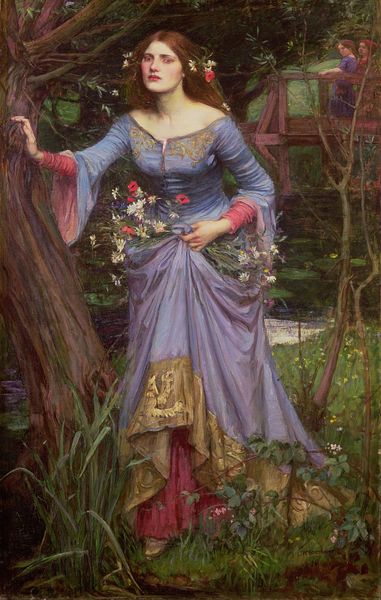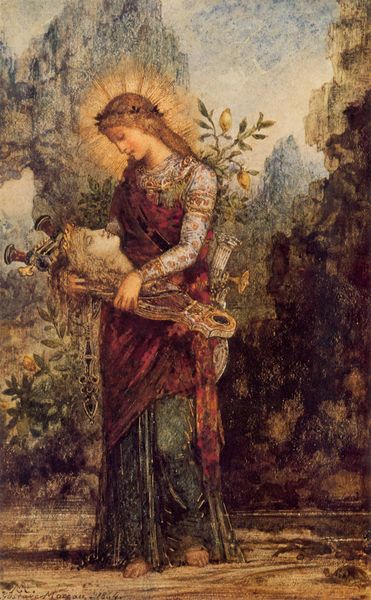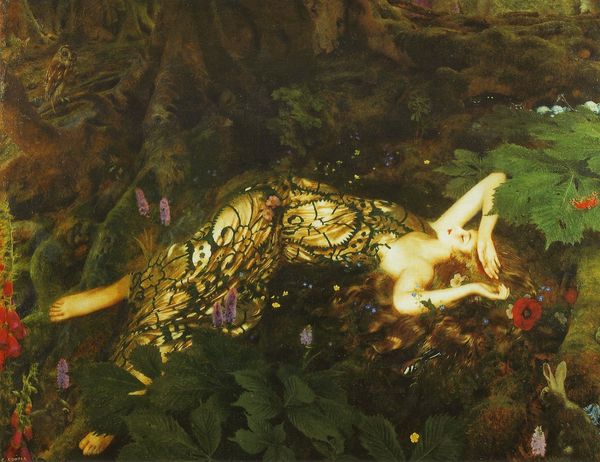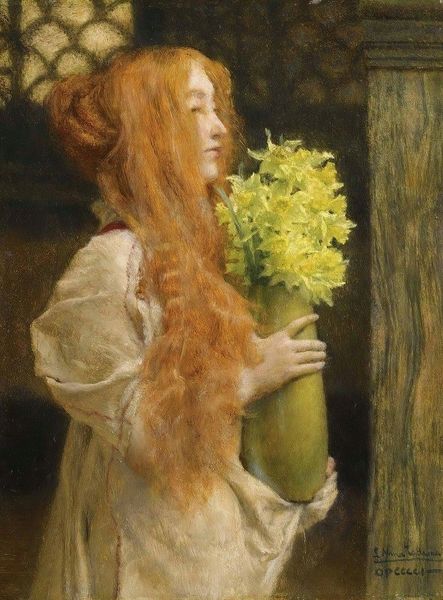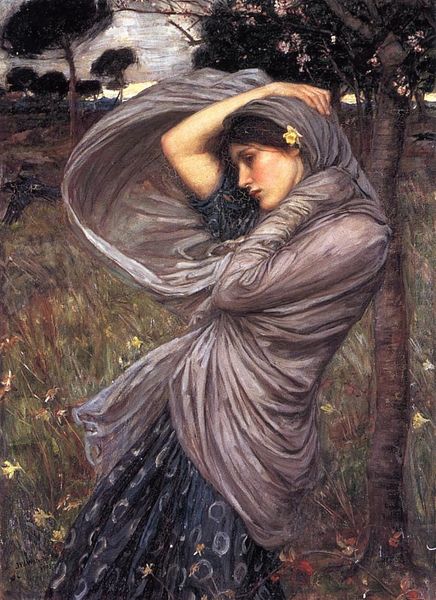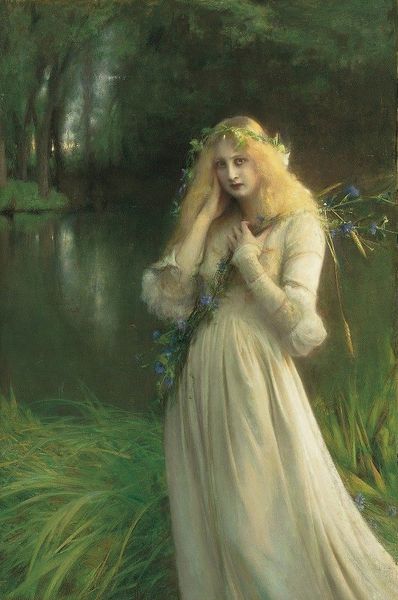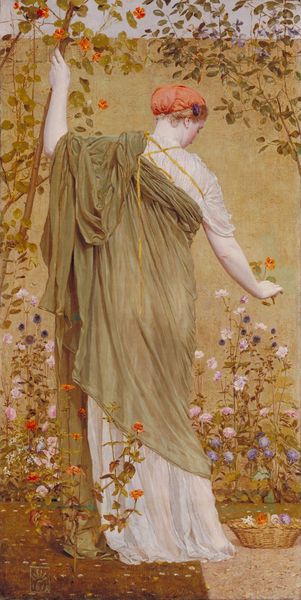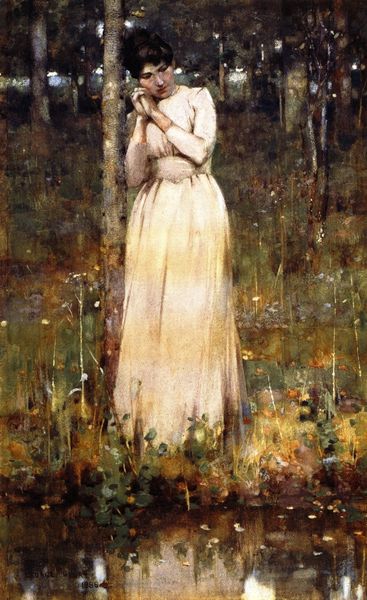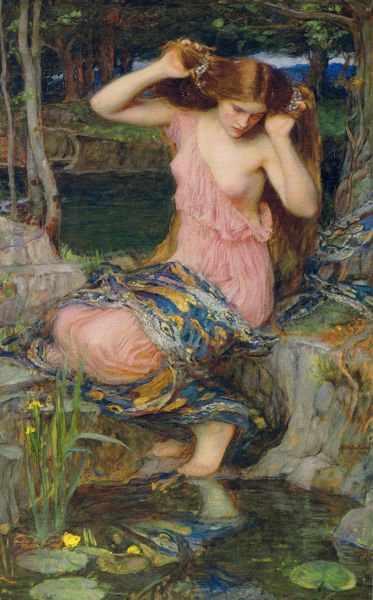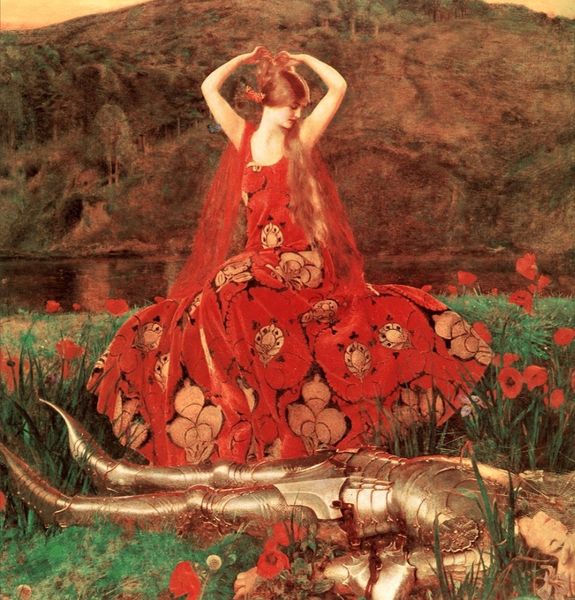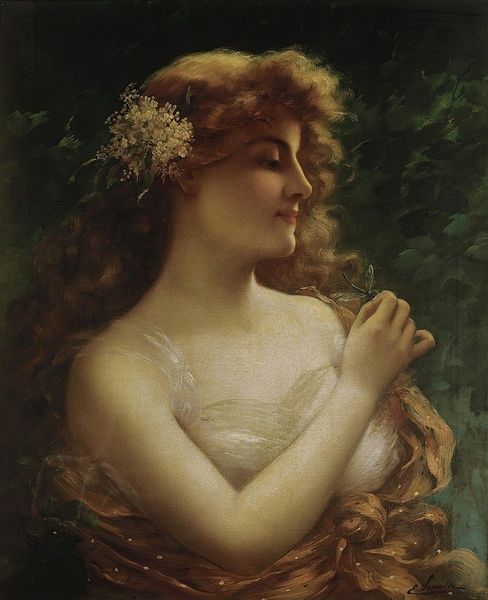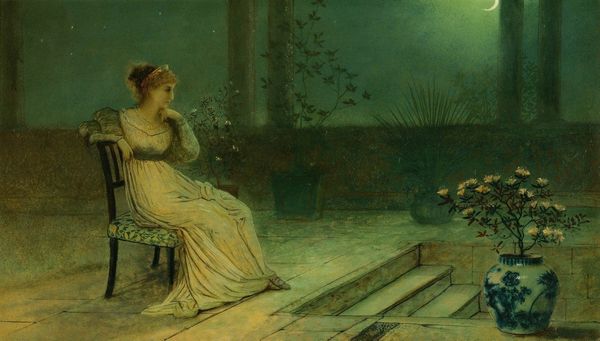
Dimensions: 73.6 x 124.4 cm
Copyright: Public domain
Art Historian: Here we have John William Waterhouse’s "Ophelia," painted in 1894. Curator: Immediately, the light shimmering on that fabric strikes me. You can almost feel the weight of it, how it would have moved and folded in the studio. Art Historian: It’s striking, isn't it? Ophelia, from Shakespeare's Hamlet, is a character burdened by madness and ultimately, a tragic drowning. Waterhouse depicts her here just before her death, adorned with flowers, a common symbol of lost innocence and remembrance. Curator: Those pre-Raphaelites! He clearly spent time on those details; it looks like oil paint to me, judging by the layers in the water plants. I wonder how long it took Waterhouse to render such intricate details, and the kind of brushes he employed? Think of the labor! Art Historian: Indeed. The flowers are powerfully symbolic. The roses likely represent love and beauty, tinged with sadness, while the willow nearby speaks of forsaken love. It is the language of flowers—loaded with symbolic meanings recognizable to Victorian audiences. The stillness of the water even reflects her impending fate. Curator: All that detail isn’t only about symbols though, is it? He surely used specific pigments, some maybe newly available then, and bound them in certain oils to give them this almost luminous quality! The way he depicts nature reminds you that this tragedy happened in real spaces. What fields grew nearby? Did it influence Waterhouse’s composition? Art Historian: Absolutely, the landscape amplifies the tragedy. She’s suspended in this liminal space between the earthly realm and something beyond, highlighted by her serene expression, which almost denies the inner turmoil. Consider that in Shakespeare’s time, Ophelia's madness was interpreted as a consequence of female hysteria, controlled by uncontrollable passion and melancholy—very symbolically loaded ideas. Curator: Yes! But to even create that melancholy required materials! Preparing the canvas, layering the paint just so…these choices transform words and stories into a material reality that impacts how we, even now, interpret female hysteria and how painting solidifies those cultural assumptions. Art Historian: Looking closely, it reminds me about how art can hold on to feelings across centuries. Ophelia continues to evoke complex themes tied to female agency, tragedy, beauty and madness that resonate strongly even today. Curator: Precisely, this artistic representation is fascinating. Examining these aspects shows how this artistic work materializes an ongoing history.
Comments
No comments
Be the first to comment and join the conversation on the ultimate creative platform.
